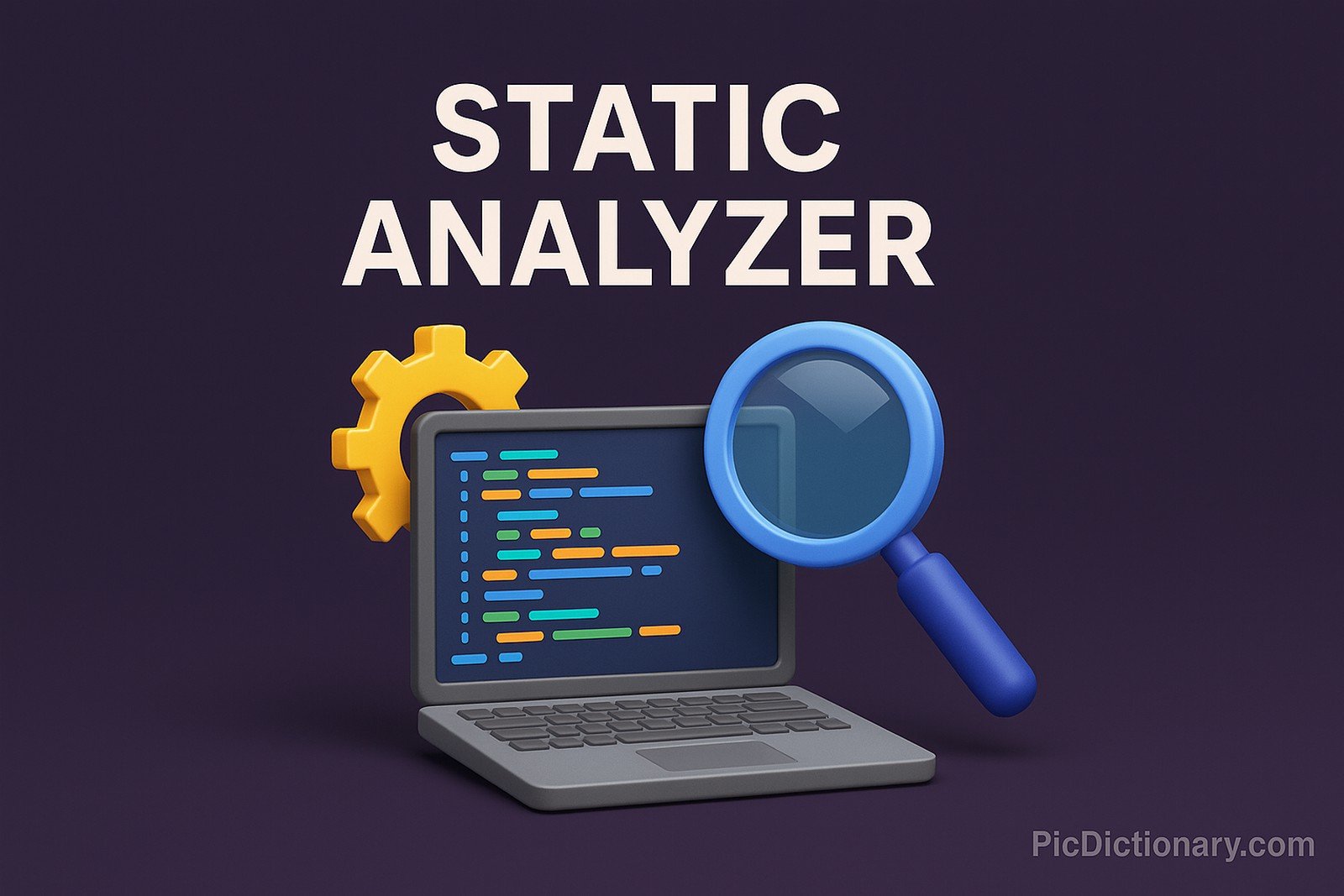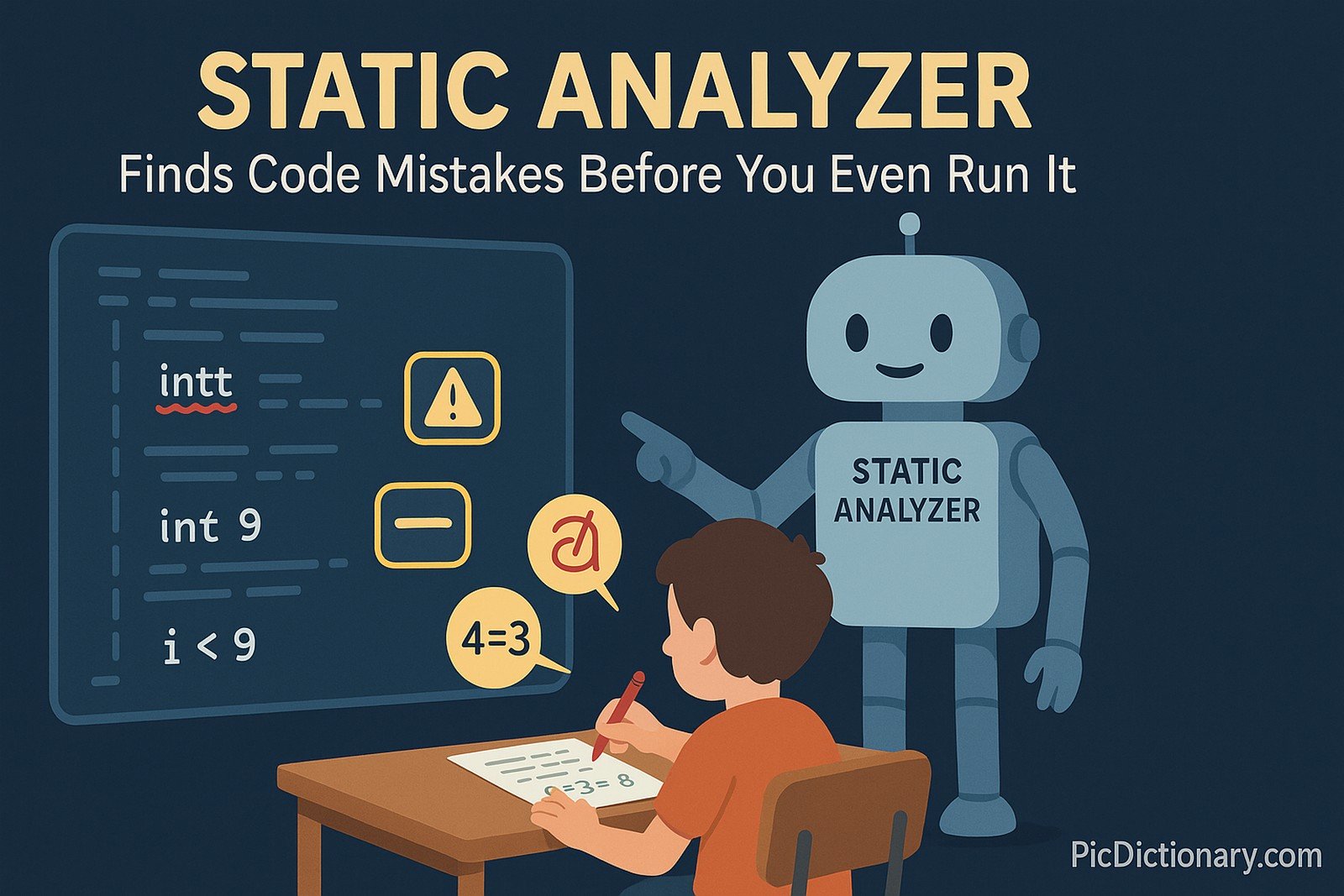Static Analyzer

Quick Navigation:
- Static Analyzer Definition
- Static Analyzer Explained Easy
- Static Analyzer Origin
- Static Analyzer Etymology
- Static Analyzer Usage Trends
- Static Analyzer Usage
- Static Analyzer Examples in Context
- Static Analyzer FAQ
- Static Analyzer Related Words
Static Analyzer Definition
A static analyzer is a software tool used to examine and analyze source code or binary executables without executing them. It helps identify potential errors, security vulnerabilities, code inconsistencies, and performance bottlenecks. Unlike dynamic analysis, which runs the program to detect runtime issues, static analysis inspects the code structure, syntax, and logic to uncover problems before execution.
Static Analyzer Explained Easy
Imagine you’re checking your homework for mistakes before turning it in. Instead of solving the problems again, you just scan through and look for spelling errors, missing steps, or wrong calculations. A static analyzer does the same thing for computer programs—it looks at the code and finds mistakes before the program even runs!
Static Analyzer Origin
The concept of static analysis dates back to the early days of computing, where manual code inspections were performed to ensure correctness. Automated static analyzers emerged in the 1970s as programming languages became more complex.
Static Analyzer Etymology
The term "static" refers to analyzing code in a non-executing state, while "analyzer" denotes a tool that examines and evaluates the software’s structure and logic.
Static Analyzer Usage Trends
With the rise of DevSecOps and secure coding practices, static analyzers have become essential in modern software development. Organizations use them to detect security flaws, ensure regulatory compliance, and improve software reliability.
Static Analyzer Usage
- Formal/Technical Tagging:
- Software Development
- Cybersecurity
- Code Quality Assurance - Typical Collocations:
- "static analysis tool"
- "source code inspection"
- "automated vulnerability detection"
Static Analyzer Examples in Context
- Developers use a static analyzer to catch syntax errors and memory leaks before compiling the code.
- In cybersecurity, a static analyzer helps detect security vulnerabilities like SQL injections and buffer overflows.
Static Analyzer FAQ
- What is a static analyzer?
A static analyzer is a tool that checks source code for errors and vulnerabilities without running the program. - How is a static analyzer different from a dynamic analyzer?
Static analyzers inspect code without execution, while dynamic analyzers run the program to detect runtime issues. - What are common static analysis tools?
Popular tools include SonarQube, Coverity, Clang Static Analyzer, and Fortify.

Static Analyzer Related Words
- Categories/Topics:
- Software Testing
- Secure Coding
- Quality Assurance
Did you know?
Some of the earliest static analyzers were developed for NASA’s space programs to ensure mission-critical software was free of errors.
PicDictionary.com is an online dictionary in pictures. If you have questions or suggestions, please reach out to us on WhatsApp or Twitter.Authors | Arjun Vishnu | @ArjunAndVishnu

I am Vishnu. I like AI, Linux, Single Board Computers, and Cloud Computing. I create the web & video content, and I also write for popular websites.
My younger brother, Arjun handles image & video editing. Together, we run a YouTube Channel that's focused on reviewing gadgets and explaining technology.



Comments powered by CComment